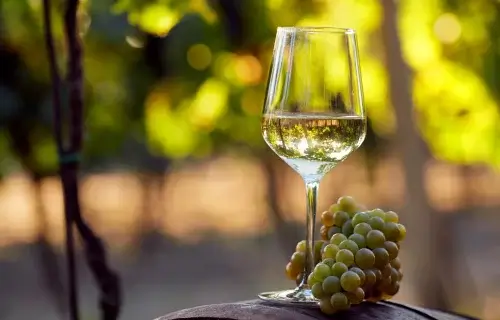KUNMING, China — Winemaking began in the Middle East 11,000 years ago, according to new research. Scientists say wild grapes were domesticated by the first farmers at the end of the last Ice Age and identification of the “cradle of wine” accurately dates its invention for the first time. The discovery may even open the door to developing vintages more suited to global warming.
The findings are based on the largest ever genetic analysis of vine varieties. Mapping these genes shows settlers started cultivating them in the “Fertile Crescent” — a sickle-shaped zone stretching from the Nile Valley in the west to western Iran. At the same time, their cousins hundreds of miles away around present-day Armenia and Georgia were doing the same.
“Our collaborators reached out to their connections and looked for old and local varieties,” says study co-author Wei Chen of Yunnan Agricultural University in a media release. “For instance, a lot of the Armenia [samples] from old vineyards turned out to be undocumented varieties.”
The data also reveals genes that boosted flavor, color, and texture. Those genes could help today’s winemakers produce varieties more resilient to climate change and other stresses. The study in the journal Science sheds light on the ancient muscat taste too. At least one mutation underlying it may harm plants. Researchers sequenced more than 3,000 individual vine samples collected from across the world, ranging from wild locations to specimens in private collections.
“This work represents a major international collaborative effort, challenging to do in any circumstances but especially so given that we conducted it during the COVID-19 pandemic and associated lockdowns,” Chen explains.

Wine has been the foundation of many civilizations
Georgia is generally considered the “cradle of wine.” Archaeologists have traced the drink back to the people of the South Caucasus in 7,000 B.C. They turned grape juice into the beverage by burying it underground for up to 50 years.
Even though wine and grapes are very important culturally, when and where wine and table grapevines were first domesticated has been difficult to confirm. This is largely because there haven’t been sufficiently wide genetic sequencing analyses.
Other theories suggest the cultivated wine grapevine (Vitis vinifera) had a single domestication in the Middle East, from which all wine varieties stemmed. These theories claim it happened up to 4,000 years, before the advent of agriculture.
“Despite being separated by over 1,000 [kilometers], the two domestication processes appear to have occurred contemporaneously with a high degree of shared signatures of selection on the same genes,” writes Robin Allaby, an expert in plant evolution at the University of Warwick who did not take part in the study.
Wine has been one of mankind’s favorite drinks for millennia. This stems from the taste, nutritional properties, and intoxicating effects. Out of all alcoholic drinks, none has had such an impact on society.
The trade of wine between cultures opened up channels for religious and philosophical ideas to spread across Europe. Wine is frequently mentioned in the Bible, from Noah and his grape vines to Jesus. It is to this day used in the Catholic Church as a substitute for the blood of Christ. Centuries ago, a wine industry was also the mark of a sophisticated country. Only developed societies could support a prosperous and competitive wine industry. It is said that western society built its foundations on wine.
South West News Service writer Mark Waghorn contributed to this report.

